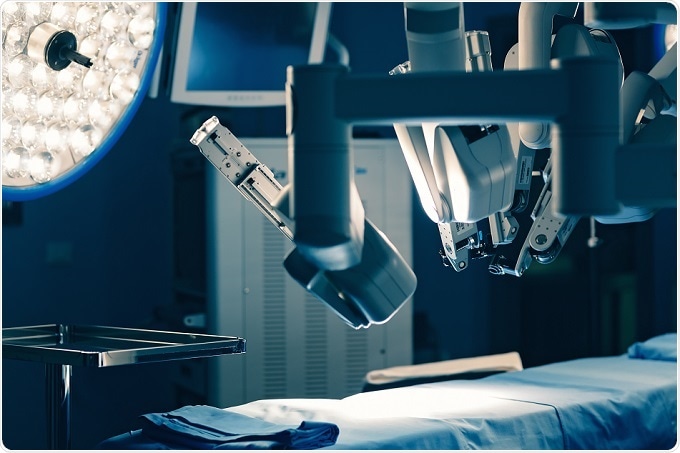Robot-assisted laparoscopic surgery for the removal of an entire kidney is associated with increased operating times and greater cost than traditional laparoscopic surgery, according to a study from Stanford University.

© MADvertise/Shutterstock.com
However, there is no significant benefit of using the robot-assisted procedure in terms of patient outcome or length of hospital stay, say the authors of the study.
Laparoscopic surgery is a minimally invasive procedure, with surgery carried out through small incisions made in the patient’s body. Surgical robots can be helpful during laparoscopy, as they afford the surgeon more dexterity than conventional laparoscopy and the robots use a 3-D, high-resolution camera that offers a magnified view of the operating field.
Certain procedures such a prostate removal or partial removal of the kidney require delicate manoeuvring, in which case the the robot provides valuable assistance. However, associate professor of urology, Benjamin Chung and colleagues wondered how much benefit the robots provide during less challenging surgeries such as radical nephropathy (removal of entire kidney).
As reported in JAMA, Chung and team analysed data pooled from 416 hospitals across the U.S. between 2003 and 2015 for almost 24,000 patients. They found that 19,000 of the patients underwent traditional laparoscopy and around 5,000 underwent the robot-assisted procedure. Of those who underwent the robot-assisted procedure, 46.3% spent more than four hours in the operating room, compared with around 28.5% of those who underwent the conventional procedure.
The overall cost of caring for patients who had the robot-assisted procedure was around $2,700 more than the cost associated with the conventional procedure, possibly due to the longer operating time and instruments required, suggest the authors.
"We found that, although there was no statistical difference in outcome or length of hospital stay, the robotic-assisted surgeries cost more and had a higher probability of prolonged operative time," says Chung.
Although the technology clearly provides a benefit in certain types of surgery, there may be an expectation to justify the large initial investment in purchasing the robot by using it for many other types of procedures, say the researchers.
"There is a certain incentive to use very expensive equipment," says Chung. "But it is also important to be cognizant as to how our health care dollars are being spent. Although robotic surgery has some advantages, are those advantages relevant enough in this type of case to justify an increase in cost?"